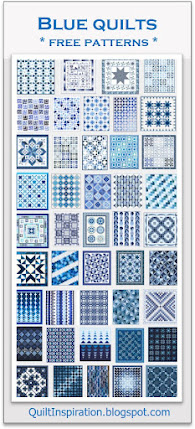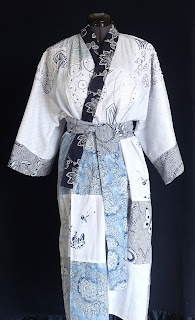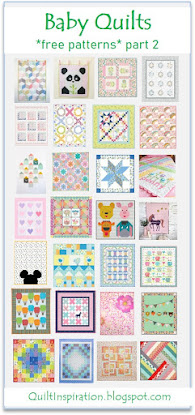El Dia De Los Muertos, or The Day of Dead, is observed in the southwestern United States, most of Latin America, and parts of Europe, Australia, New Zealand and the Pacific Islands. Day of the Dead coincides with the Roman Catholic festival of All Saints Day on November 1 and All Souls Day on November 2. We are showing our photos from the 2015 Pacific International Quilt Festival and from the exhibit of ofrendas (altars for departed loved ones) at the Desert Botanical Garden in Phoenix, Arizona.
Family Life by Susan Else, California
The amazing fabric sculptures of Susan Else were one of the highlights of the quilt show for us ! These are intricate, innovative pieces of cloth art. The daughter of professional artists, Susan was at first hesitant to follow in her parents' footsteps, but then became intrigued with the world of fiber arts. She explains her technique and purpose in making fabric sculptures: " I treat cloth not as a flat surface, but as a wild flexible skin for three-dimensional objects." Family Life shows a father, mother, and child skeleton enjoying "quality time" together, as they playfully interact with each other. Complementary colors of yellow and grape violet provide a stunning contrast and play up the stark bony quality of the ribs and feet.
Close up, Family Life by Susan Else
Family Life is made of collaged and quilted cloth applied over commercial plastic skeletons. On the bones are sayings and comments about the family structure. The head of the child contains the vintage poem, "Monday's child is fair of face, Tuesday's child is full of grace". Susan explains that one of her purposes in creating these sculptures is to explore the world of opposites: cloth and bones, joy and grief, the temporal moment of family happiness on earth, versus eternity and the ultimate end. At PIQF, we had a wonderful time chatting with Susan, a delightful and supremely talented artist. Susan is available to quilt guilds and art groups to give instructional talks and workshops. For more information, please check out her very informative website, Susan Else Sculpture.
Electronic Intrusion, 80 x 60", by Sandra Small-Proudfoot, Canada. Quilted by Mary Light
Sandra Proudfoot notes, "Addressing the subject in a somewhat playful manner, the quilt speaks to the improper use of electronic devices. Taking the theme of the...Day of the Dead Festival, a sugar-masked corpse hangs from a cross of cellphones as tiny cadavers dance mischievously amongst colorful marigolds, known as Flowers-of-the-Dead that decorate cemeteries during festival time." We thought this was a very creative and artistic way of delivering an important safety message.
Close up, Electronic Intrusion by Sandra S. Proudfoot, Canada
Sandra adds, "It is a reminder about distracted driving" [using a cellphone while driving a car]. The skull is decorated with flowers in the traditional way of adorning Day of the Dead skulls; and its shroud is done in three-dimensional folds. Sandra's original design is hand-appliqued and longarm quilted (by Mary Light).
Sugar Skulls by Sharon Lee, California
Sharon is the designer of the Handy Caddy bags for carry quilting and sewing notions, so she appeared at PIQF as a vendor. However, she has an interesting story to tell about how her quilt came to be featured. She writes, "On set-up day, I found myself filling my [vendor] booth with my signs and displays, and sadly, I didn't have a space to present my new favorite quilt, the Day of the Dead quilt. I noticed that at the end of my aisle, there was empty space on the walls. I had wanted to enter my quilt into the show, but it was past the deadline. I asked if I could just put it up for the show. I was ecstatic when [the quilt show management] said yes!" The sugar skull fabric is from the Fabric Fiesta collection by Dan Morris for RJR Fabrics.
Close up, Sugar Skulls by Sharon Lee
These are some of the most colorful and interesting fabric panels we have seen lately! One 24 x 44" panel contains six skulls which can be cut apart and arranged however you wish on your quilt. Sharon notes, "I broke my vow not to buy more fabric when I found these beautiful Sugar Skulls. Too bad that it is [currently] discontinued. Day of the Dead is not going out of style soon." Note: As of this post, the sugar skull fabric panel - from the Fabric Fiesta collection by Dan Morris for RJR Fabrics - can still be found online at Equilter.
Continuing on to Phoenix, Arizona, each year the Desert Botanical Garden holds a week-long Dia de los Muertos celebration, including an exhibit of ofrendas (altars). Traditionally, ofrendas help people to remember and celebrate the dearly departed. Like all traditions and celebrations, the ofrendas have changed in response to shifting social contexts. Here are some outstanding examples.
Raices Familiares by Patricia Silva
Patricia Silva graduated with honors from the Art Center of Tucson (Arizona) in 1995. Raices Familiares (Family Roots) features beautifully framed photographs of family members along with candles, flowers, and elaborately painted and embellished skulls. Patricia says, "I discovered that my own life experiences, both joyful and painful, have brought me to where I am today. I'm thankful for the gift that god has given me and humbled by each unique experience my art journey brings."
Patricia Silva's use of bold and bright colors in her creations reflect
her love and admiration of her Hispanic heritage and culture. As a folklorico dancer in her youth, Patricia was introduced to the beauty of the many rich colors used in the embroidered costumes from various regions of Mexico, such as those from the state of Oaxaca. She has painted and decorated these skulls, shown above and below, with butterflies, flowers, hearts, and other symbols of love and happiness.
Cuatlicue by Monica Gisel Crespo
Monica Gisel Crespo's work, which is inspired by her Oaxaquenan heritage, has been shown in Mexico and the United States in multiple solo and collective exhibitions. This installation depicts the Earth Mother Goddess, who is considered the female aspect of the primordial [Aztec] god Ometeotl. The striking goddess figure is illuminated from within and adorned with corn husks, a feather headdress, and a necklace depicting sacrifices made in her honor. The flowers represent fertility and abundance.
The Messenger by Martin Moreno
Martin Moreno is an award-winning Arizona artist and an educator in the arts. He says, "The thought of death being the end is not a part of my belief. I believe our destination and journey to the next world is a reality... Our time here is but a blink in time, our existence will be but a memory; only the love we share with others during our time here will ensure that our footprint on earth will endure." This ofrenda invites the viewer to record the names of their loved ones who have traveled on to the next world. The names are written on tissue paper resembling flower petals.
Martin Moreno is the resident artist at Xico, Inc., a multi-cultural arts organization in the heart of Phoenix, Arizona. In 2011, he received the Governor's Arts Award, and was named Arizona's Artist of the Year.
Olmecalaca by Zarco Guerrero
Zarco Guerrero is an award-winning sculptor, mask-maker and performance artist from
Mesa, Artizona. This stunning altar, placed on the floor, features an Olmec head that is nearly five feet tall. Giant heads carved out of stone are the most iconic images of the Olmec. The name of the installation, Olmecalaca, is a contraction of the words "Olmec" and "Calaca" (skull). Zarco Guerrero says, "The Olmecs are considered the mother culture of Ancient Mexico. The Maya and the Aztec inherited the artistic style and aesthetic of these highly sophisticated people. The Olmecs were the first civilization to express human emotions in sculpture."
"It is in Olmec Art that we see the first depiction of La Calaca or Miquiztli [a symbol of Death in the Aztec calendar.] The use of La Calaca as the symbol for transformation has been one of Mexican Art's most often seen visual images from ancient times to the contemporary, and has become synonymous with the celebration of Dia de los Muertos."
The large skull shown above has translucent amethyst-colored eyes that appear to gleam, reflecting the spotlight. The skull below, one of two that flank the installation on sticks, wears a traditional flower headdress.
Zarco Guerrero has exhibited and received international acclaim and
many awards, including the Arizona Governor's Arts Award and
the Artistic Excellence Award from American Hispanics in Higher
Education. You can see a gallery of his work in various media on his website.
Image credits: Photos were taken by Quilt Inspiration at the 2015 Pacific International Quilt Festival and the Desert Botanical Gardens.
Tuesday, October 27, 2015
Subscribe to:
Post Comments (Atom)



























Wow, I am surprised at the number of skull-related work. It sure is a departure from the usual Halloween art I see.
ReplyDeletevery impressive
ReplyDelete